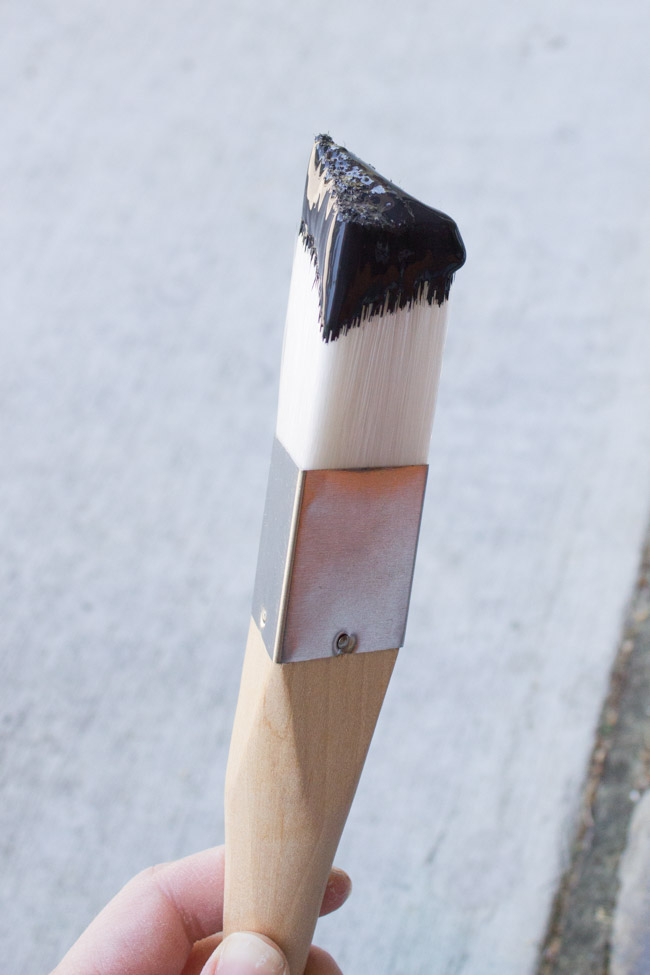Wondering how to paint a wall? Confused about the corners? Well, interior decorating is easiest with the right painting tools.

Here's our guide to painting those tricky corners and edges. However, if you're not a DIY fan, then find a local, Which? endorsed decorator who can do it for you.
Buy a cutting in brush
To paint corners and edges, you will need an ‘angled’, ‘tapered’ or 'cutting in’ paint brush. This will help you master a wall painting technique called cutting in.
Painting tips for corners and edges: ‘cutting in’
When painting walls, a roller will not each the corners and edges. You’ll need to learn how to cut in when painting – it takes courage and a steady hand.

Dip your angled brush into the paint and tap against the paint can to ensure it’s not overloaded with paint.
First, brush the paint onto the wall, a few centimetres from the edge or corner.
Next, take a deep breath and paint all the way to the edge with a firm vertical stroke along the edge or join. You are aiming for a gliding sensation as the brush moves along the corner. Too much pressure will result in a ridge of paint forming.
- Angled bristles: Brush with a slanted edge to make painting against the edge easier. Angled foam: Foam brushes will typically have an angled tip to make applying paint easier. Round-ended roller: While not the best choice, using a roller with rounded ends helps to get paint into edges and corners where regular rollers aren’t able.
- The best way to paint edges is with a paint edger. Paint pad edgers offer the speed of a paint roller and the accuracy of a brush, without the added time and expense of using painter’s tape.

Thin Angle Sash - slanted bristles and a thin profile produce a good, straight line for trimming in corners and edges. Angle Sash - features slanted bristles and holds more paint than its thin counterpart. Excellent for cutting in at the ceiling or painting trim. Flat Sash - bristles are straight across and used primarily for. Chisel Trim Brush - slanted bristles produce a good, straight line for trimming in corners and edges. Square Trim Brush - the ends of the bristles are cut square and used primarily for applying paint over flat areas. Angled Brush - bristles are cut to make it easier to apply paint to window trim. To view the next video in this series click: this video series, pro painter Bill Nunn, consultant for The Family Handym.
Best Paint Brush For Corners
Trader tip

When painting a room, the cutting in paint technique can be used for skirting boards, door frames and windows. If you're working on a vertical join, you may find it easier to rotate the brush to paint with the narrow side. Pawel Zarski from Pol Master.
If you're not confident tackling this job yourself then find a Which? Trusted trader in your area to do it for you. All our Which? Trusted Traders endorsed painters and decorators have successfully passed our rigorous assessment, which includes a visit from a trading standards professional, credit checks and a thorough assessment of business proceses and procedures. You can find a painter and decorator with our online search tool.
Corner Roller Brush
- Tips on how to hire painters and decorators
- Advice on how to work with your trader
- More on how to paint a ceiling
Paint Brush For Corners And Edges
The Perfect Paint Edger is designed to replace the need for a traditional paintbrush for most cutting in, and virtually eliminates the need for painter’s tape. It is built with a durable, solid wood handle; ABS plastic pad holder; and stainless steel, adjustable guard. The guard is spring-loaded so it’s easy to load paint without creating a big mess. This edger is angled so it handles like a paintbrush, but its paint pad surface lays down a fast coat, quicker and cleaner than bristles. It can be used for right-handed or left-handed work. This edger works best on smooth surfaces like drywall. It’s a good choice for those who want the speedy application of a paint pad with the comfortable grip of a paintbrush.
